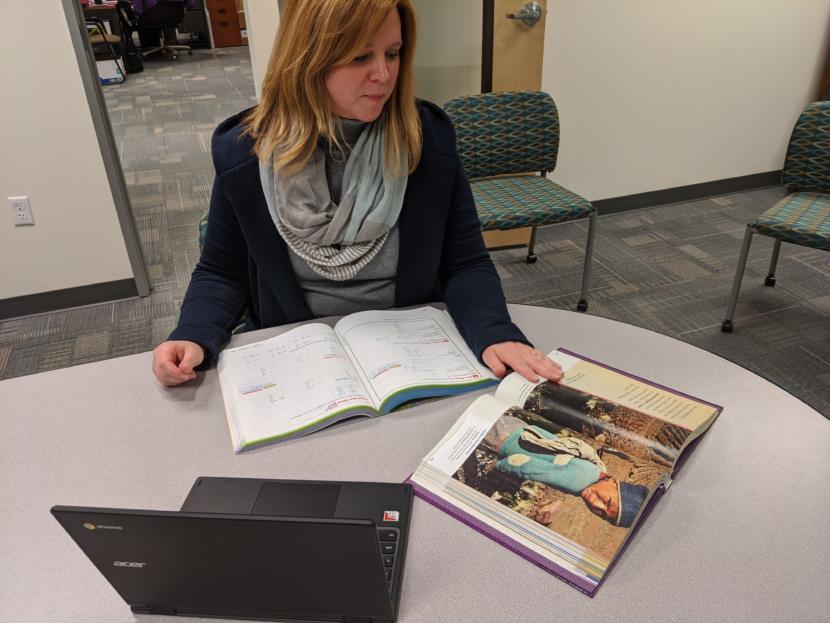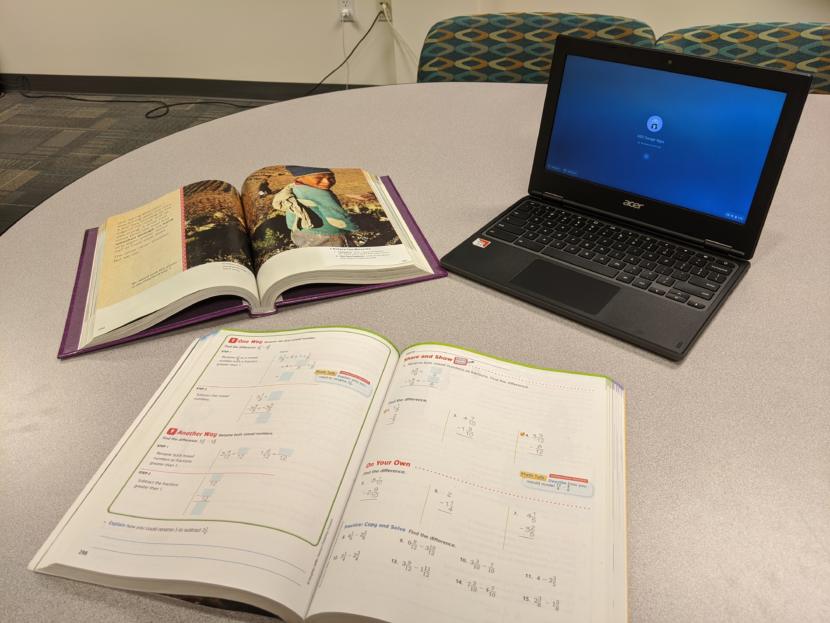
There’s a lot of uncertainty surrounding education right now. Schools statewide are closed until at least May 1, but that doesn’t mean instruction has ended.
State Deputy Education Commissioner Karen Melin said she understands how uncomfortable that feeling of uncertainty is for families looking for answers.
“Information is changing rapidly, and new information is coming out hour by hour,” Melin said in an email. “What may have been the situation on Friday is no longer how things are today. The same may be true for tomorrow.”
Melin said the state is working closely with partners across Alaska to keep the public informed.
Districts maintain that they will continue to provide a curriculum to students. And now, what that curriculum will look like is starting to take shape.
Melin said each of Alaska’s 54 school districts will handle remote education differently.
For example, St. Mary’s City School District near Bethel, with a total enrollment of 200 students, can use more of an in-person approach.
“That might be that, when they come to get their their meals, they’re handed their daily packet of work,” Melin said. Then they might turn in their work in exchange for a new homework packet the next day.
“That’s not a long term solution, but it’s one that the district has figured out as a way to continue a student’s learning in a disruptive time,” Melin said.
Other districts like the Anchorage School District, which serves over 40,000 students, are more equipped to offer e-learning opportunities.
ASD already has an online learning program that some high school students and middle school students use to take classes not offered at their school. Some home school programs or other alternative programs use online classes too.
But Jennifer Knutson, ASD’s senior director for teaching and learning, said there isn’t much data on how online learning works at the elementary level.
Most of the online classes right now are geared toward older students and are self-paced. She said there would need to be more supervision for elementary students.
“We still want to have the human connection with all this,” Knutson said. “So one of the components we’re going to emphasize is on a regular basis having personal contact through phone calls to just check in and see how things are going.”
After conducting a needs assessment with families, ASD reported 4% of families had no internet in the home, and 5% of families had no devices at home.
Recently, in a letter to families, ASD Superintendent Deena Bishop stated that the district is on track to begin offering remote learning options for all grade levels on March 31.
For elementary students, ASD plans to offer live online tutoring opportunities, particularly for English language arts and math, as well as pencil-and-paper support materials that families can pick up.
Middle school teachers will use a combination of offline activities and online coursework.
And high school students can expect the first online courses to be the ones needed for graduation.
The district said it is planning to offer extended time in the summer for anyone missing necessary credits to graduate.

There is a lot of focus on the curriculum right now, but seventh grade science teacher Ben Walker in Anchorage said his main concern has been ensuring his students have everything they need physically and mentally.
Families are mostly positive, he said. But his students are a little anxious. This is the first time they’re living through a worldwide event on this scale.
“They want to see their friends. They want to know and make sure their friends are OK,” he said. “Hopefully, as time rolls on, there’s a lot more connections that we can make between kids, because that’s really a big piece that that they miss: that socialization part of coming together every day.”
Being out of class has been hard for him too. But Walker said if there’s any silver lining to this crisis, it’s that the education community is being challenged to think in new and creative ways.
He hopes to introduce students to activities that don’t require sitting in front of a screen, but he’s also looking forward to using new tools.
“I’m definitely excited,” Walker said. He said there are techniques that he’s always wanted to try, and now he is almost forced to do so. “I think you know, everyone will come out of this with this kind of an improved practice in this in this online space.”
ASD has listed several educational resources and activities for families to do on its website while official instruction gets up and running next week.
The state’s Department of Education and Early Development has also launched a website dedicated to remote learning resources.
